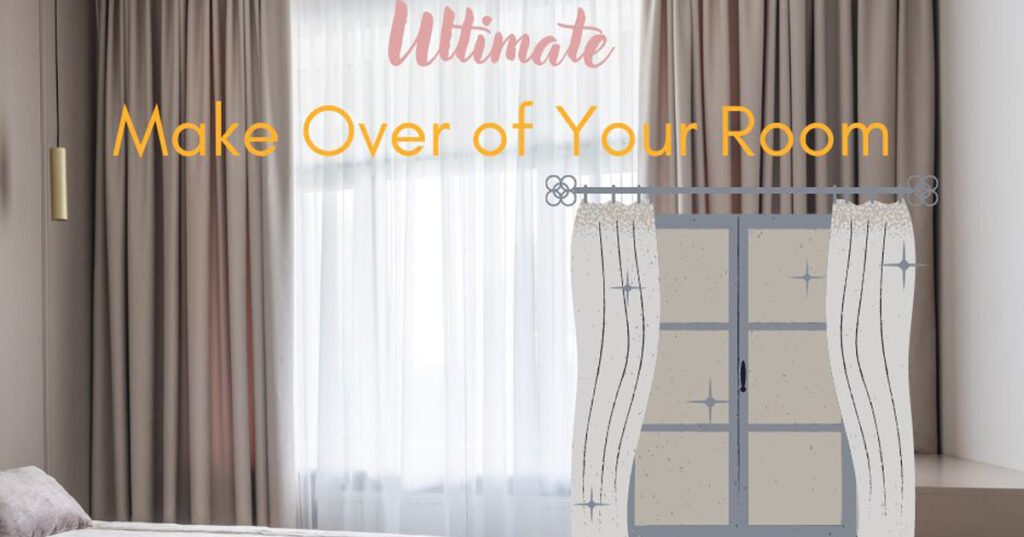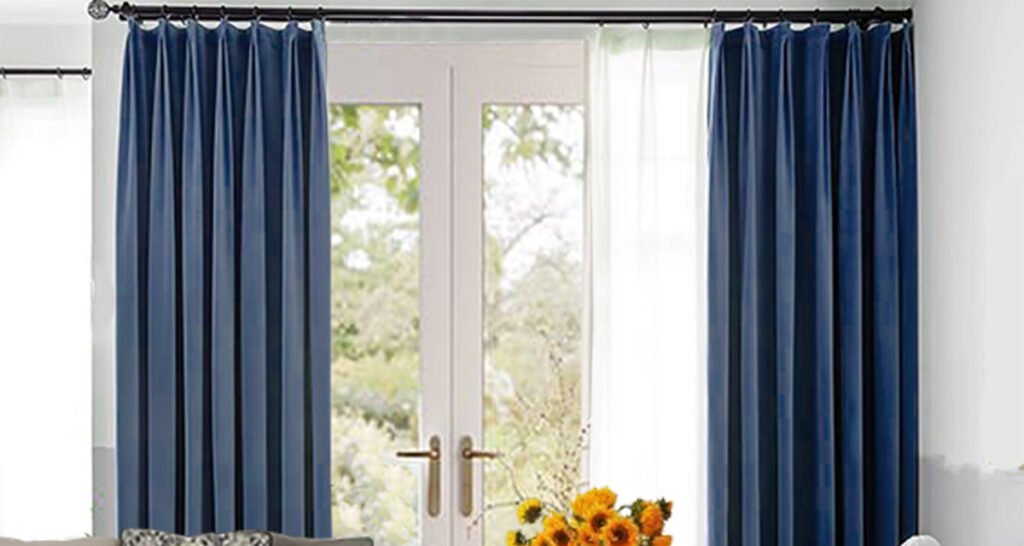The Ultimate 7-Step Guide to Curtains: Crafting Your Perfect Window Ensemble

Curtains transcend mere fabric over windows; they’re integral to interior design, capable of transforming a space. From adding privacy to controlling light, curtains serve multiple functions while also enhancing the aesthetic appeal of a room. In this comprehensive guide, we will delve into everything you need to know about curtains – from choosing the right type to understanding their importance in home decor.
Why Curtains?
Before we delve into the nuances of choosing curtains, let’s understand why they are an integral part of interior design:
- Privacy: One of the primary functions of curtain is to provide privacy. They act as a barrier between the interior of your home and the outside world, preventing prying eyes from peering in.
- Light Control: Curtain enable you to manage the influx of natural light into a room. Whether you want to filter in soft, diffused light or block out harsh sunlight, curtain give you the flexibility to adjust the lighting according to your preference.
- Temperature Regulation: In addition to controlling light, curtain also play a role in regulating the temperature of a room. Thicker curtains can help insulate a space, keeping it warm in the winter and cool in the summer, thereby reducing energy costs.
- Acoustic Insulation: Curtain have sound-absorbing qualities, which can help reduce noise from outside, creating a quieter and more peaceful indoor environment.
- Aesthetic Appeal: Last but not least, curtain add style and personality to a room. They come in a variety of colors, patterns, and textures, allowing you to customize your decor and create the desired ambiance.
When it comes to choosing curtain, there are several types to consider, each with its own unique characteristics and functionalities:
- Panel Curtains: Panel curtain are the most common type and consist of a single panel of fabric that hangs from a rod or track. They offer horizontal opening and closing, ensuring convenient access to the window.
- Sheer curtains: Sheer curtain consist of lightweight, translucent fabric, permitting soft, diffused light to filter through while maintaining a degree of privacy.They are perfect for creating an airy and ethereal look in a room.
- Blackout Curtains: Blackout curtain are made from thick, opaque fabric that blocks out light completely. They are ideal for bedrooms, home theaters, or any other space where light control and privacy are paramount.
- Thermal Curtains: Thermal curtain are designed to insulate a room and regulate temperature by blocking out cold drafts in the winter and heat in the summer. They often feature multiple layers of fabric or a special thermal lining.
- Valance: A valance is a decorative panel of fabric that is typically mounted above a window to add visual interest and soften the look of the window treatment. It can be used on its own or in combination with other types of curtains.
- Cafe Curtains: Cafe curtain cover only the bottom half of a window, providing privacy while still allowing light to enter from the top. They’re frequently found in both kitchens and bathrooms.
- Swag and Jabot Curtains: Swag and jabot curtain feature elaborate draping and cascading fabric that create a formal and luxurious look. They frequently adorn formal dining rooms and living areas.
Choosing the Right Curtain
Now that you’re familiar with the different types of curtain, it’s time to choose the right ones for your space. Here are some factors to consider:
- Functionality: Determine the primary function of the curtain in each room. For bedrooms, prioritize light blocking and privacy with blackout curtain. In living areas, opt for curtain that allow natural light to filter in while still providing some level of privacy.
- Fabric: Consider the fabric of the curtain and how it will complement the decor of the room. Lighter fabrics like linen and cotton lend a casual and breezy vibe, while heavier fabrics like velvet and silk add a touch of luxury.
- Color and Pattern: Choose a color and pattern that enhances the overall aesthetic of the room. Neutral colors like white, beige, and gray are versatile and timeless, while bold colors and patterns can make a statement.
- Length and Width: Measure the height and width of your windows to determine the appropriate length and width of the curtain. Floor-length curtains are classic and elegant, while shorter curtains can create a more casual and contemporary look.
- Hardware: Select curtain rods, tracks, and finials that complement the style of the curtain and the overall decor of the room. Consider factors like material, finish, and mounting options.
- Layering: Experiment with layering different types of curtains for added depth and texture. For example, combine sheer curtains with blackout curtain for both privacy and light control.
- Maintenance: Finally, consider the ease of maintenance when choosing curtain. Certain fabrics may necessitate dry cleaning, whereas others are suitable for home machine washing.
Conclusion
Curtains are not just functional window dressings; they are an essential component of interior design that can elevate the look and feel of any room. By understanding the different types of curtains and how to choose the right ones for your space, you can create a stylish and comfortable environment that reflects your personal style. Whether you prefer sheer and airy or bold and dramatic, there’s a perfect pair of curtains or drapes out there waiting to transform your windows into works of art.


